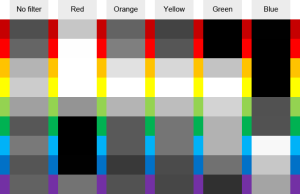Maniodepresivní psychóza je vážné duševní onemocnění, pacienty vnímá veliké změny nálady vitality, psychických funkcí a stojí mimo normálního fungování organismu. Změny se střídají po tzv. cyklech.
Jsou popsány jako hypománie, mánie, deprese a smíšený stav.
Hypománie je projev blaženosti a skěvlé nálady, postižený nabývá zvýšeného pocitu energie, cítí se nadšeně. Pacient je velmi přátelský a komunikativní, nezdráhá se navázat konverzaci i přesto že za normálního stavu býva ,ostýchavý, má hodně nových nápadů, je kreativní a za těchto okolností mnoho přestává užívat léky, protože mají pocit, že jsou nní v pořádku a nepotřebují je.
Mánie má podobné vlastnosti jako mánie, ale býva často silnější. Objevují se agresivní příznaky.
Deprese bývá obdobím nejobtížnějším. Projevy jsou skleslá nálada, nadměrná spavost, člověk podléhá prokrastinaci. Přestává chodit pracovat, ven a má sebevražedné sklony.
Léčba maniodepresivní psychózy
Léčba musí být zahájena včas, jinak se může stát, že se onemocnění stane chronickým. Léčba se nesmí zanedbat, protože může mít velice špatný vliv na pacientův stav. Jednak se tento vliv může promítnout na pacientově zdravotním stavu a také se může zvýšit náklonnost k sebevraždě, které bývá v prvních letech tohoto onemocnění velice vysoké. Fakta dokazují, že jeden z pěti jedinců postižených maniodepresivní psychózou spáchá sebevraždu v tomto období.
Léčba může být stížena díky stavům, kterým někteří podléhají, těmto stavům říkáme rozněcování, což znamená střídná Hypománie, Mánie a Deprese, v krátkém období. Léčba si klade za cíl počet těchto fází co nejvíce snížit.
Při léčbě maniodepresivní psychózy se doporučují hlavní tři medikamenty. Jedná se o tzv. antidepresiva, antipsychotika a stabilizátory nálady. Pacientovi mohou být předepsány i léky, které mají pomocné účinky např. při nespavosti, úzkosti, neklidu atd.
Sources:
[Unattributed]: „Mániodepresivní psychóza“:
[ http://nemoci.vitalion.cz/maniodepresivni-psychoza/ ] para. 1, 31-34 (12 leden 2016)
Moreira, Veronika (Březen 2011): „Mániodepresivní psychóza“ :
[ http://maniodepresivni-psychoza.zdrave.cz ] para. 2-4 (12 leden 2016)

